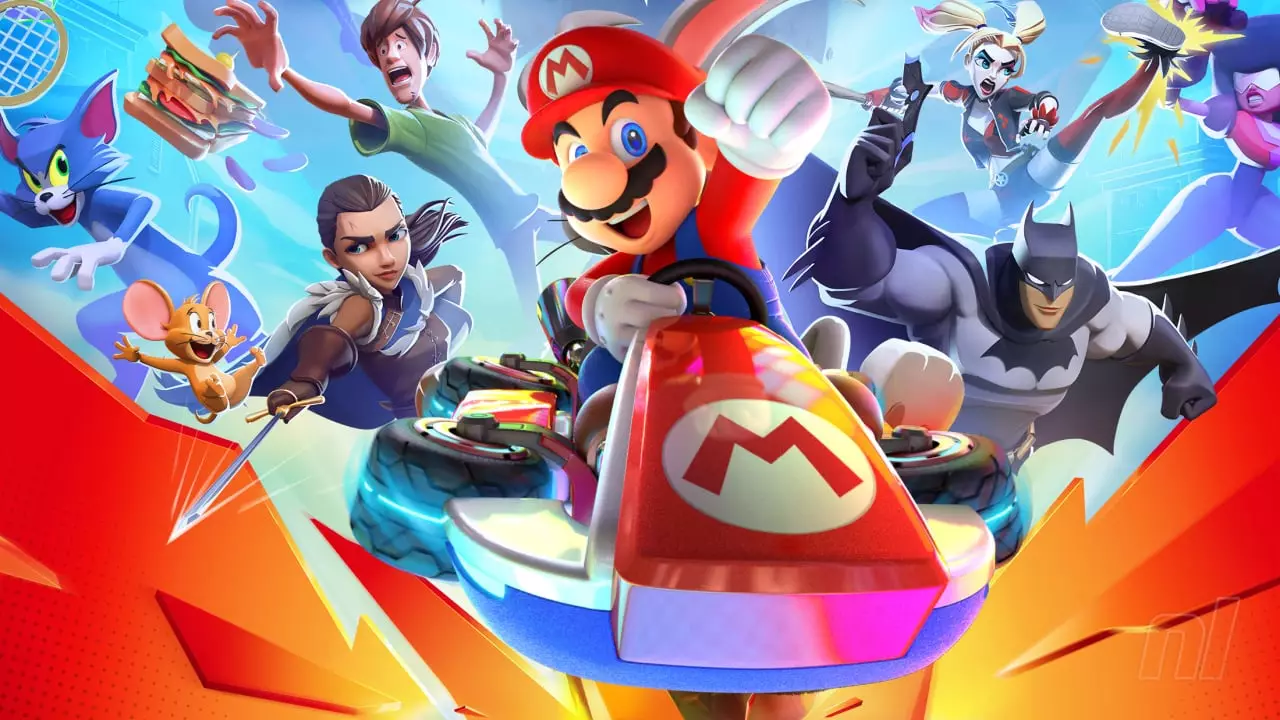In a gaming landscape that often revolves around franchise revivals and sequel iterations, Warner Bros. Interactive Entertainment took an ambitious swing at creating a Mario Kart-style racing game, dubbed ‘Project Moonlight.’ This endeavor, led by the WB San Diego studio, aimed to bring together a range of beloved Warner Bros. characters, from Scooby-Doo to Adventure Time’s Finn and Jake. The project was envisioned during an era when home entertainment shifted to digital realms fueled by intense gaming engagement due to the pandemic. The ambitious concept, however, soon succumbed to internal strife and managerial indecision.
The aspiration behind Project Moonlight was commendable—to tap into the immense popularity of kart racing games while integrating a wealth of IP from the Warner Bros. library. It’s an ideal mix: these characters have the kind of recognition that could lead to substantial player attraction. The racing game promised stylized graphics powered by Unreal Engine 5 and featured mechanics reminiscent of classic kart racing games, including drifting and power-ups. Still, what started as an exhilarating initiative soon spiraled into a tale of competing visions and continuous setbacks.
The Downfall of Project Dreams: Internal Turmoil and Strategic Misfires
Colin Moriarty’s revelations about Project Moonlight expose the chaotic inner workings of a project that could have revitalized Warner Bros.’ gaming catalog. Frequent staff rotations and disagreement regarding its business model stifled creativity and progression. The choice between a free-to-play format or a traditional paid release is a battleground many developers face today. Unfortunately, in this case, indecision became the enemy of innovation, and the potential drivers of excitement fell victim to corporate politics.
Moreover, the underlying tension between teams was palpable. While Player First Studio, the team responsible for MultiVersus, enjoyed two launches with their title, WB San Diego was left hanging in uncertainty. The frustration expressed by the team members showcased a critical flaw in Warner’s internal structure—a disconnect between strategy and execution that ultimately led to the demise of their ambitious racing title. Instead of uniting the diverse Warner IPs into compelling gameplay, internal friction hindered the collaboration necessary for success.
The Competitive Racing Landscape: A Tough Market to Crack
The kart racing genre is characterized by iconic titles, particularly Nintendo’s Mario Kart, which sets a staggering bar for competitors. In light of this, Warner Bros. was not alone in its aspiration, as multiple companies have made valiant attempts to carve out their niche within this highly competitive space. Games like Disney Speedstorm and DreamWorks All-Star Kart Racing reflect an industry eager to capitalize on nostalgia and fan-favorite characters. However, these attempts rarely come close to usurping the throne held by Mario Kart, leaving skeptics pondering whether any Warner Bros. racing title could have broken through.
Considering this context, it becomes evident that the ambition behind Project Moonlight, although praiseworthy, faced a turbulent road ahead. Had the game launched, it’s likely it would have been met with scrutiny, as players inevitably favor established franchises. The bursting of the Multiversus bubble further cast doubt on whether Project Moonlight could have emerged as a beacon of success amid a wave of skepticism.
Reflecting on Missed Opportunities: What Could Have Been
Project Moonlight stands as a symbol of what could have been for Warner Bros. in the gaming arena. With a roster brimming with rich and varied characters, a racing game packed with unique abilities and distinct driving styles could have breathed new life into the genre. Imagine speeding through vibrant courses inspired by iconic shows and films—what a captivating experience it would have been! The missed opportunity is palpable not only for the company but for gamers who crave innovation and creativity in their entertainment choices.
Ultimately, Warner Bros.’ foray into racing could have served as a revival for a whole new generation of gamers, successfully blending nostalgia with modern gameplay. Yet, a mix of internal clashes and broader marketplace realities snuffed out that spark before it had the chance to ignite. The question looms large: with the right vision, could Project Moonlight have paved the way for a new contender in the racing genre? As we reflect on the fallout of this project, it’s a stark reminder that potential is only as valuable as the structure supporting it.

